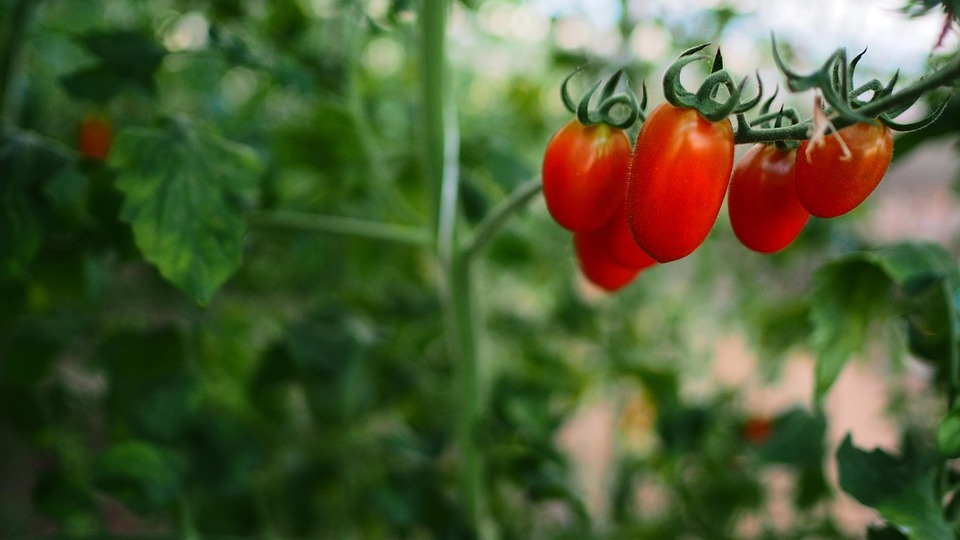# From Seed to Sustainability: Choosing the Right Plants for an Eco-Conscious Garden
There’s a certain magic that accompanies the first planting of seeds in spring — the soil feels cool and rich, and the sun’s gentle warmth nudges the earth alive. Last year, I experienced pure joy as I watched my first batch of heirloom tomatoes unfurl their leaves towards the sky, each one a promise of delicious meals to come. It was a simple act of planting, but the load of responsibilities that came with producing food sustainably was heavy yet fulfilling. It was in that vibrant, overgrown garden that I found purpose and deepened my love for gardening that aligns with the ethos of an eco-conscious lifestyle. If you’re looking to cultivate a haven brimming with life while being gentle to our precious planet, the right choices at the seed stage can lead to a flourishing ecosystem right in your backyard.
## Why Choose Eco-Friendly Plants?
When it comes to gardening, the plants you choose can be a powerful tool for promoting biodiversity, building healthier soil ecosystems, and creating spaces that support local wildlife. Here are a few reasons why eco-friendly gardening should be your guiding principle:
1. **Biodiversity**: Diverse plant life encourages various beneficial insects and pollinators, such as bees and butterflies. Healthy ecosystems not only thrive but are also more resilient to pests and diseases.
2. **Soil Health**: Select plants that naturally improve soil quality, such as legumes that fix nitrogen, which can lead to better growth overall.
3. **Water Conservation**: Drought-tolerant plants and native species often require less water, which is an essential consideration in our increasingly dry climate.
4. **Pest Resistance**: Choosing the right plants can minimize the need for chemical pesticides, which can damage ecosystems. Companion planting can create a balanced garden that repels pests naturally.
5. **Cultural Heritage**: Planting heirloom or native varieties keeps local agricultural traditions alive while offering rich flavors and hardiness.
## How to Choose the Right Plants for Your Eco-Conscious Garden
Embarking on your eco-friendly garden venture starts with making some thoughtful choices. Here’s how you can ensure that your garden aligns with sustainable practices:
### Step 1: Know Your Climate Zone
Before any planting begins, familiarize yourself with your local climate zone. The U.S. Department of Agriculture has a hardiness zone map that divides regions based on average temperature ranges. This will guide your choices, helping select plants that will thrive without excessive intervention.
### Step 2: Opt for Native Plants
Native plants are those that have evolved in your region over thousands of years. They are naturally adapted to your local soil and climate, meaning they will require less water, fertilizer, and pest control. Additionally, they provide crucial habitat and nourishment for local wildlife, making your garden a key player in the local ecosystem.
**Examples of Native Plants:**
– **Echinacea (Coneflower)**: Beautiful and beneficial, it attracts pollinators and can be used in herbal remedies.
– **Monarda (Bee Balm)**: A fragrant addition that draws in hummingbirds and other pollinators.
– **Asclepias tuberosa (Butterfly Weed)**: Critical for the life cycle of monarch butterflies.
### Step 3: Choose Heirloom Varieties
Heirloom plants are open-pollinated species passed down through generations. Often more flavorful and vibrant than commercial varieties, they are crucial for maintaining genetic diversity in our food systems. Plus, they’re great in a garden where sustainability reigns supreme.
**Heirloom Choices:**
– **Brandywine Tomatoes**: Bursting with flavor, these can be the highlight of your summer dishes.
– **Scarlet Runner Beans**: Not only are these beautiful with bright red flowers, but they are also excellent for the soil by fixing nitrogen.
– **Lemon Cucumber**: Unique and refreshing, this variety will surprise and delight your taste buds.
### Step 4: Incorporate Companion Planting
Companion planting adds an extra layer of sustainability to your garden by promoting beneficial plant relationships. Certain plants can deter pests, serve as a natural fertilizer, or even attract pollinators when planted together.
**Effective Combos:**
– **Tomatoes and Basil**: Basil complements tomatoes by repelling insects while enhancing their flavor.
– **Carrots and Onions**: These two plants deter each other’s pests, enhancing growth without synthetic methods.
– **Nasturtiums with Cucumbers**: Nasturtiums attract aphids away from cucumbers, serving as a biological pest control.
### Step 5: Prioritize Edible Plants
Growing your own food not only promotes sustainability but also contributes to a self-sufficient lifestyle. Consider plants that offer both nutritional benefits and adaptability to your local climate.
**Edible Enhancements:**
– **Kale and Swiss Chard**: Both are nutrient-dense and hardy, providing greens throughout different seasons.
– **Asparagus**: Plant once and enjoy for years, as it’s a perennial vegetable.
– **Fruit Trees**: Depending on your soil and space, consider jurisdictional varieties of apple, pear, or peach trees — food with a purpose!
## Creating a Sustainable Garden Layout
Once you’ve selected the perfect combination of plants, the next critical step is to arrange them thoughtfully for both aesthetics and function. A well-planned garden layout can enhance biodiversity, help with air circulation, and ensure all plants receive adequate sunlight.
### Pro Tips for Arrangement:
1. **Tall Plants to the North**: If you’re in the Northern Hemisphere, position taller plants on the north side so they don’t shade out shorter varieties.
2. **Group By Water Needs**: This enables efficient irrigation and fosters a natural watering cycle within the garden ecosystem.
3. **Add Layers**: Utilize vertical gardening techniques, such as trellises or stacking planters, to maximize space and yield.
## Nurturing Your Eco-Conscious Garden
After planting, maintaining a sustainable garden requires ongoing care, but there are several practices to keep in mind:
### Step 1: Composting
Creating a compost pile is an excellent way to recycle organic waste and improve soil quality. Kitchen scraps, yard waste, and even shredded paper transform into nutrient-rich soil amendments that will feed your plants beautifully.
### Step 2: Mulching
A layer of organic mulch helps retain soil moisture, suppresses weeds, and contributes to soil health as it breaks down. Materials like straw, wood chips, or shredded leaves work well.
### Step 3: Natural Pest Control
Avoid chemical pesticides and incorporate natural methods instead. Introduce beneficial insects like ladybugs or set traps with neem oil to maintain balance without ecological harm.
### Step 4: Water Wisely
Hydration is vital for plant health, but consider implementing a rainwater collection system or using drip irrigation to minimize waste. Native plants often require less watering once established.
## Engaging in the Biophilia of Gardening
Gardening isn’t just about food; it’s also about connection — to the earth, the seasons, and ourselves. An eco-conscious garden can serve as a sanctuary for all forms of life. Reconnect with the soil and use it not only to grow plants but also to foster curiosity, learning, and joy.
## In Conclusion
Choosing the right plants for an eco-conscious garden is a rewarding endeavor that goes beyond aesthetics. The choices we make at the seed stage ripple throughout ecosystems, enhancing biodiversity, improving soil quality, and providing nourishment. By opting for native, heirloom, and edible varieties, engaging in companion planting, and implementing sustainable practices, anyone can create a vibrant green sanctuary that gives back to both the gardener and the Earth.
So, grab your gloves, gather some seeds, and watch your eco-conscious garden grow — because starting from seed can lead to a future filled with sustainability and beauty!



